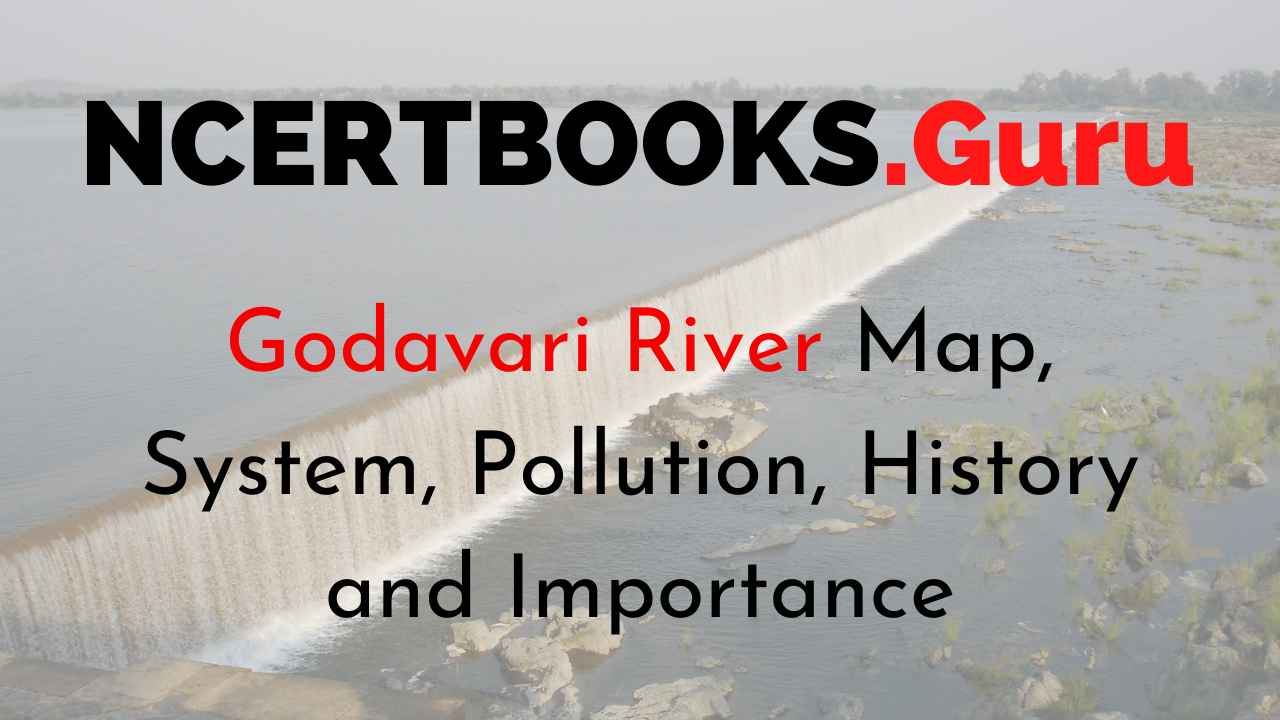Godavari River is the second most sacred river which is located in Central and Southeastern India. The Godavari River is one of the longest rivers of the Indian Peninsular. It is approximately 1,465 kms. The Arabian Sea is 80 kms away from the Godavari River. Originating from Nasik in Maharashtra the river passes through many states of the country before draining into the Bay of Bengal.
Top 10 Largest Rivers in India, you would also find the details about Indian River Systems and major rivers of India.
Godavari River Details
| Name of the River: | Godavari River |
| Source of Origin: | Nashik, Maharashtra |
| Location: | West India and South India |
| Tributaries: | Pravara, Purna, Manjira and Manair. |
| Length: | 1,465 kms |
| Importance: | Agriculture, Irrigation and Transportation |
| Pollution: Industrial waste, coal mining, and thermal plants | Industrial waste, coal mining, and thermal plants |
| Another Name: | Ganga of the South |
About Godavari River
Godavari River is known as the Godavari is a river in Central India, rising in Nashik, a district of Maharashtra. It flows in the Deccan plateau and then, to the south of India before it joins the Bay of Bengal The Godavari river rises in the Sahyadris near Trimbakeshwar. It is located around 80 kms away from the Arabian Sea. It flows south-easterly for sound 1,465kms direction through the states of Maharashtra and Andhra Pradesh before it falls into the Bay of Bengal.
The river extends over an area of 3,12,813 kms², which is almost 10% of the area of the country. There are many hills that surround the river on all four sides. The banks of the Godavari river are rich in aluminium soil and are great for agricultural activities.
Godavari River History
The history of the Godavari river is from the Kotirudar Samhita of the Shiva Purana. The origin of the river Godavari, according to the Hindu culture, is due to Shiva and Ganga. It is said that Ganga said that she will agree to stay on the Brahmagiri Mountain if Shiva manifests himself in the area too.
Shiva manifested himself as the Triambakeshwara, one of the twelve of the country and Ganga agreed to stay as a new river. At first, the river was called Gautami river but later it was known as Godavari river.
The Godavari river is the largest river in the Peninsular and the third largest in India. Another name given to the Godavari River is “Ganga of the South”. There are many holy places that are located on the banks of the Godavari River. Every twelve years there is a Kumbh Mela which takes places in the holy areas along the river.
Godavari River Map
Godavari River, known as the Ganga of the South is the largest river of the Indian peninsular. It originates at Nashik, Maharashtra. The Godavari River stretches for 1,465 kms and is one of the most important rivers of the country.
The Godavari River basin covers a territory of 3,12,812 km², which is 9.5% of the total geographical area of India. Godavari river flows through three main states of the country- Maharashtra with a drainage area of 1,52,199 kms², Andhra Pradesh with a drainage area of 73,201 kms² and Madhya Pradesh with a drainage area of 31,821 kms².
Godavari River Basin is bounded by several hills. In the north, it is surrounded by Satmala Hills, in the east by the Eastern Ghats, in the west by the Western Ghats and in the south by Ajanta Hills.
The Godavari River drainage basin briefly covers small districts in Karnataka and Tamil Nadu before draining into Bay of Bengal.
Godavari River System
Godavari River System originates in Central India and is one of the main rivers of South India. The Godavari River stretches for around 1,465 kms and is the largest river of the Indian peninsular.
Godavari River is a river that runs through many states of the country. Some of the major states that the Godavari River flows through are Maharashtra, Andhra Pradesh, Chhattisgarh and Odisha. It shifts from Central India to Southern India.
The Godavari River is 80 kms away from the Arabian Sea and it drains out in the Bay of Bengal. There are 16 tributaries of the Godavari River on both sides of the bank.
Godavari River Pollution
One of the biggest reasons for pollution is industrial pollution that is growing every year. Companies along the banks of the river and its various tributaries, release tonnes of untreated industrial waste into the river. Due to the vast amounts of industrial waste, it is harming the life of the animals living underwater.
Other sources of pollution that the Godavari River faces is urban and rural sewage and agricultural runoff. Due to these reasons, the Godavari River is critically polluted. In regions such as the Wardha basin, due to the coal mining and thermal power plants, the river is severely polluted.
People that take a dip in the water contact skin diseases and the people that drink the Godavari River water face stomach problems. The main reason for these diseases is the industrial waste which is released by companies along the bank of the river.
Godavari River Importance
There is a lot of economic as well as spiritual and cultural significance of the Godavari River. The importance of the Godavari River has been growing over the years. One of the biggest significance of the Godavari River is that it is the largest river of the Indian Peninsular. Due to this reason, it contributes a lot towards the agricultural activities which happen around the river.
The Godavari River and the Krishna River have their deltas very close to each other. Both the rivers together support more than a crore people of the country. Another importance of the Godavari River is that it is an important inland and national waterway.
Trimbakeshwar, where the Godavari River originates is one of the twelve of its kind in the country. It holds a great amount of importance for religious communities. Trimbakeshwar is one of the four places in the country where the Kumbh Mela takes place. This Kumbh Mela takes place every twelve years.
The tenth Guru of the Sikhs, Guru Gobind Singh, on the banks of the river Godavari declared Guru Granth Sahib as Sikhism’s eternal Guru. Godavari River is the one where India’s most well-known Saraswati Temple is located.
Many of the great dynasties which rules the country grew along the banks of the second largest river in the country.
Short Essay on Godavari River
The Godavari River is one of the many rivers in India. It is a river that originates in the district of Nashik in Maharashtra. The river is the second largest river of the country and flows for 1,465 kms before it drains into the Bay of Bengal. Another name the River Godavari is known is ” Ganga of South India”. It flows through central and south India.
The Godavari river provides for very fertile land on its bank. Due to the fertile land, there are many agricultural activities which happen on the banks of the river Godavari. It is one of the third largest rivers in the country. It flows through Central India and then through South India before it flows into the Bay of Bengal.
The Godavari River holds a lot of religious importance. One of the main reasons for the religious importance is that on the banks of the river is located, Trimbakeshwar, which is one of the twelve of it’s kind in the country. There is a Kumbh Mela that happens once in every twelve years in Trimbakeshwar.

10 Lines on Godavari River
- In India, the Godavari River is the second largest and sacred river.
- The direction that the Godavari River flows is from the central part of the country to the south-eastern part of the country.
- Godavari river is the largest river on the Indian Peninsular in comparison to the length, area it covers and the water flow
- The origin on the Godavari River in Nashik in the state of Maharashtra.
- The Godavari River is 80kms away from the Arabian Sea
- Godavari River is one that splits into two distributaries before it falls into the Bay of Bengal.
- Some of the tributaries of the Godavari River are Pravara, Purna, Manjira and Manair.
- The Indian Navy has a warship named “INS Godavari” due to the Godavari River.
- It is one of the rivers which originates in the Western Ghats.
- A name that the river is known for is the “Ganga of South India”.
FAQs on Godavari River
Question 1.
Name the four hills that surround the Godavari River?
Answer:
Godavari River Basin is bounded by several hills. In the north, it is surrounded by Satmala Hills, in the east by the Eastern Ghats, in the west by Western Ghats and in the south by Ajanta Hills.
Question 2.
Where is the Godavari River located?
Answer:
The Godavari River is located in Central and Southeastern India.
Question 3.
Which are some reasons for the pollution of the Godavari River?
Answer:
Companies along the banks of the river and its various tributaries, release tonnes of untreated industrial waste into the river. Due to the vast amounts of industrial waste, it is harming the life of the animals living underwater. Other sources of pollution that the Godavari River faces is urban and rural sewage and agricultural runoff.
Question 4.
What is the importance of the Godavari River?
Answer:
One of the biggest significance of the Godavari River is that it is the largest river of the Indian Peninsular. Due to this reason, it contributes a lot towards the agricultural activities which happen around the river. Another importance of the Godavari River is that it is an important inland and national waterway. Trimbakeshwar, where the Godavari River originates is one of the twelve of its kind in the country.
